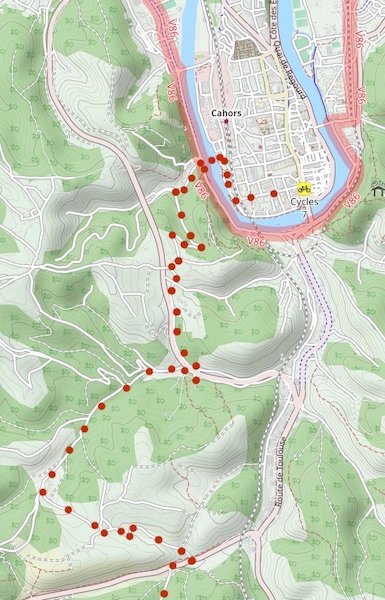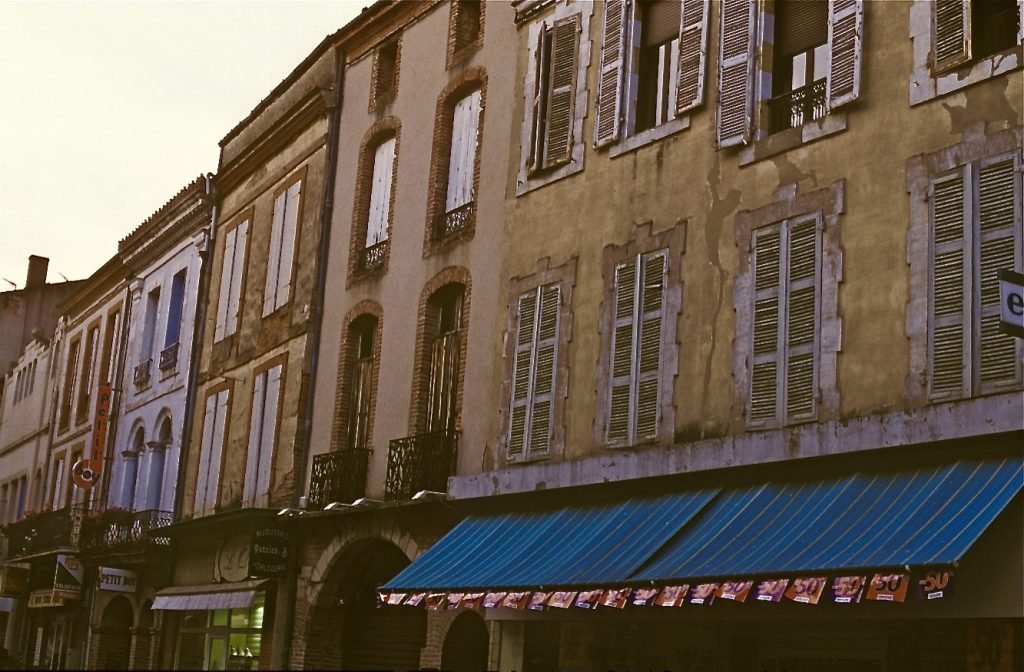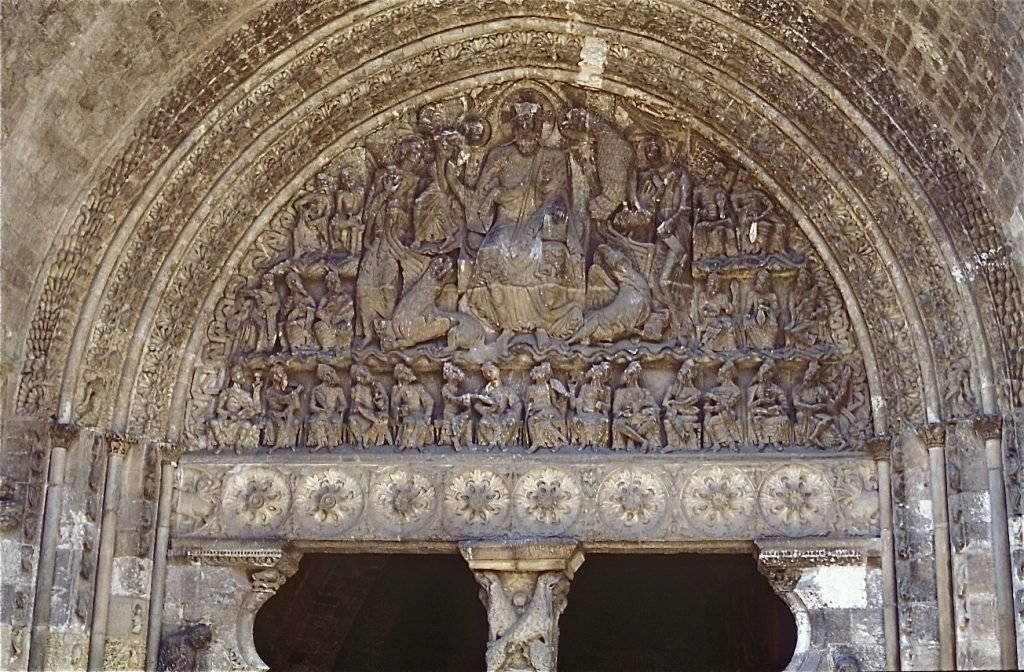Today’s 65 kilometer ride, mainly along the ancient pilgrimage route, is less interesting, initially even boring, but worth it to reach wonderful Moissac***. I do not recommend the shortest and flattest, very heavy traffic route out of Cahors unless you leave at 6 am; this is to follow D820 south 3.5 km until D653. Initially on this route you can usually ride on a sidewalk or a very narrow bike lane; and then you can usually but not always weave through the the joined parking lots of the mega-stores on the right. Just after the Intersports, you would turn right onto D653 (light to somewhat moderate traffic). It is a nerve wracking ride suitable only for skilled cyclists.
The itinerary described here, which I recommend, uses quiet roads but requires a fairly steep initial climb of 90 meters (300 feet) in 1.6 kilometers (1 mile).

Navigate to the southwest of Cahors in order to go under the train tracks. Ride north along the Lot to the famous Valentre (automobile-free) bridge; cross; turn right then immediately turn left onto D27. When possible turn left (sign :La Croix Magne). This climbs fairly steeply up in two switchbacks. At the first intersection continue straight; then at the T turn left . Continue south with the GR65 and alongside the highway for just over 1 km. Turn right through the highway underpass and after half circle at the intersection turn left back north along the highway. This road soon curves to the left, heading west, then south. Keep on the main road. In about 3 km the road makes a left turn followed by a right turn and at the bottom of the the hill ends at D653. Turn right for 100 meters, then left onto D7.
Initially on D7 there is a moderate climb to Labastide-Marnhac, then a slow climb and a descent in featureless countryside until you reach Lascabanes (many gites and b&bs). A detour is possible to L’hospitalet (once site of a hospital ministering to pilgrims). After town the highway goes to the left, but the sign is only visible fromtheother direction. Follow D67 from Labastide-Marnhac and then D659 south to L’Hospitalet; continue after the town and then take D54 west until it rejoins D7 after Lascabanes (gites, b&bs, camping, restaurants, food).

Stay on D7 (the ancient way) until Lauzerte, about 40 kilometers from Cahors, a fortified hilltown (gites, b&bs, hotels, camping, restaurants, food). Before Lauzerte you leave the Department of Lot and enter the Department of Tarn-et-Garrone.


The faster, easier, less traffic, route that I recommend from Lauzerte is to stay in the river valley on the well-surfaced D953 until it reaches the sign for Moissac at a traffic circle by a church. Turn left on D957. A climb of 100 meters (300 feet) ensues, followed by a descent into D927 and Moissac (gites, b&bs, hotels, camping, restaurants, food). If you prefer to follow the ancient route somewhat closely, however, from Lauzerte take D2 to Durfort-Lacapelette. It is 4 km shorter. However many trucks go this way and you have to cross two ranges of hills instead of one, climbing 100 meters (300 feet) each time. From Dufort-Lacapellete take D16 and D957 to D927 (rolling to flat to downhill) into Moissac***.
Be sure to visit the Abbey, with its tympanum*** and its cloisters***. The town is charming, and has all kinds of lodging and services.


